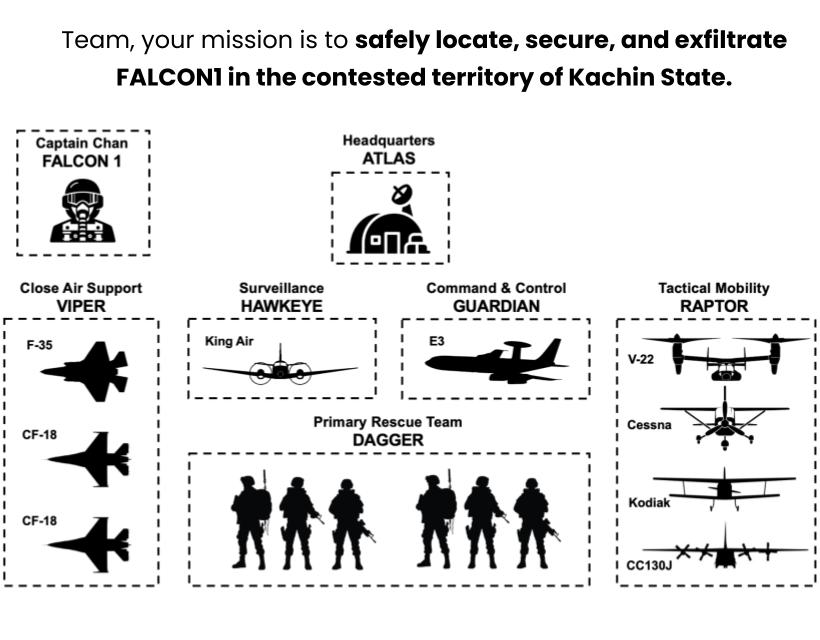

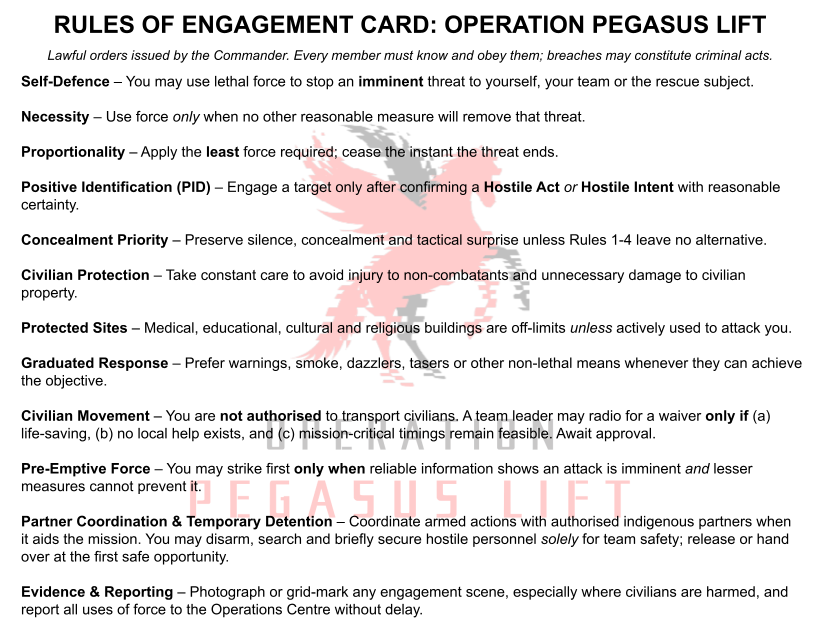
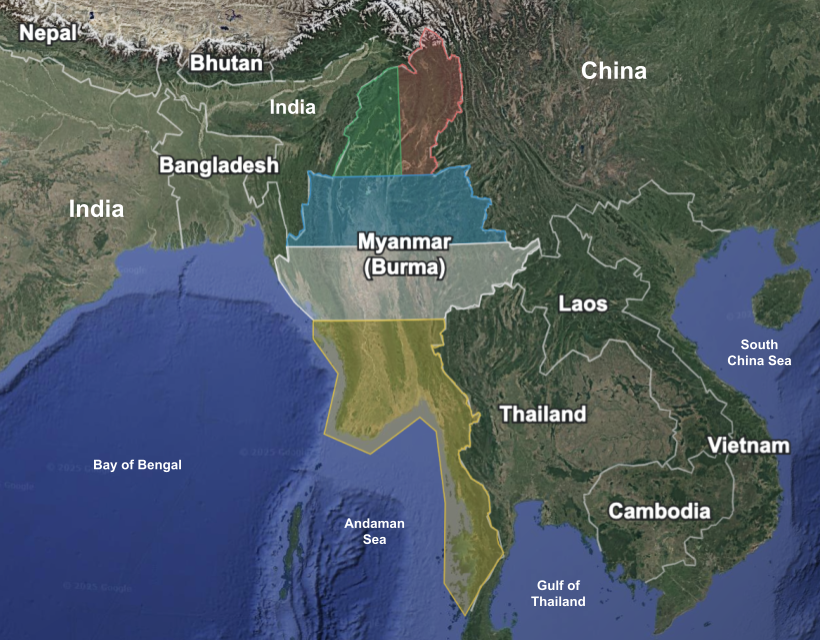
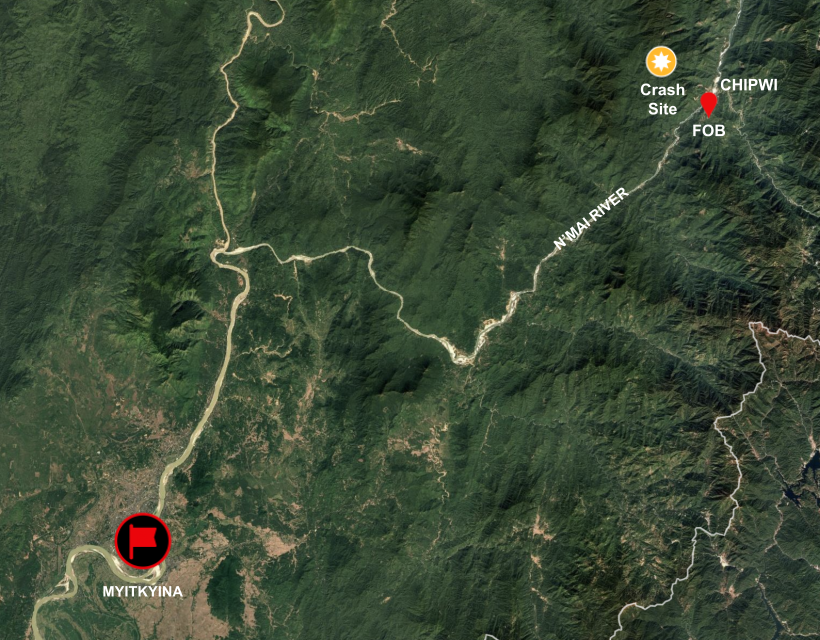
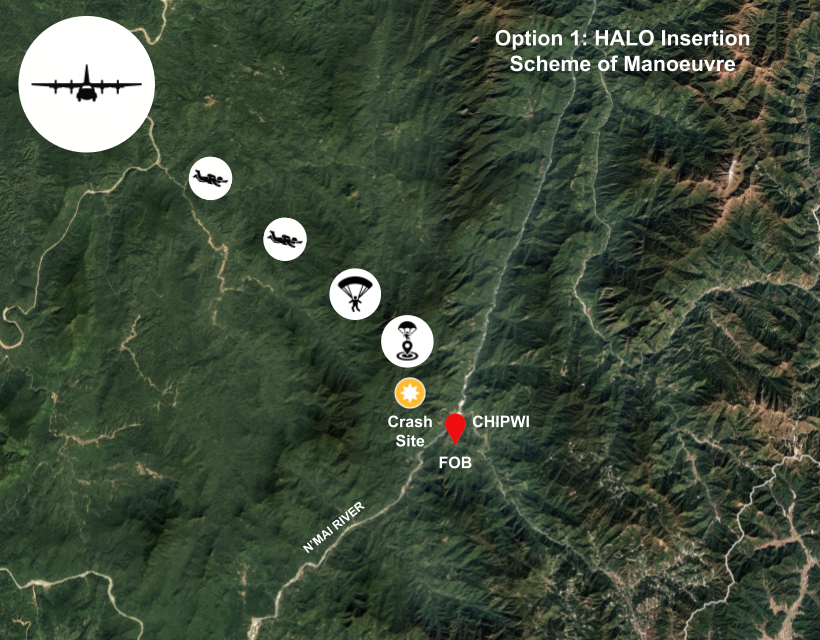
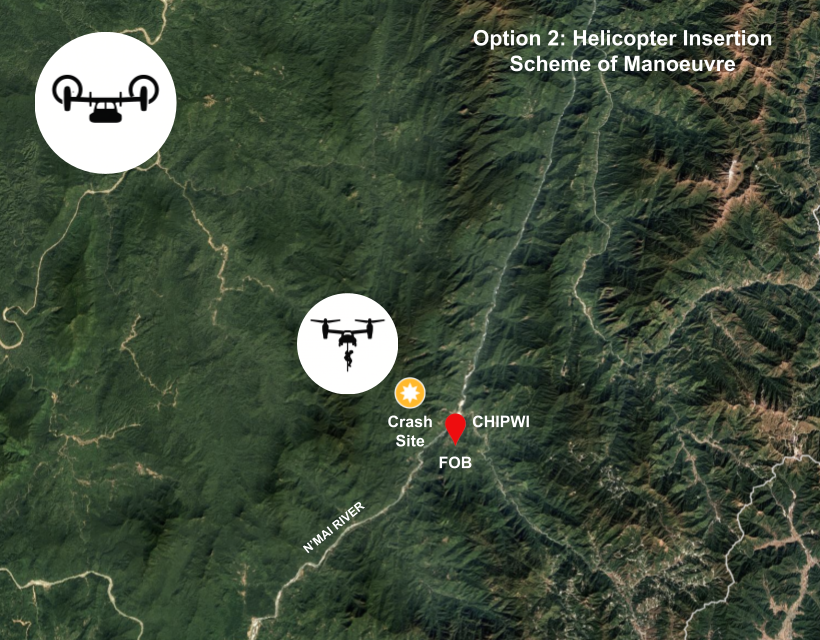
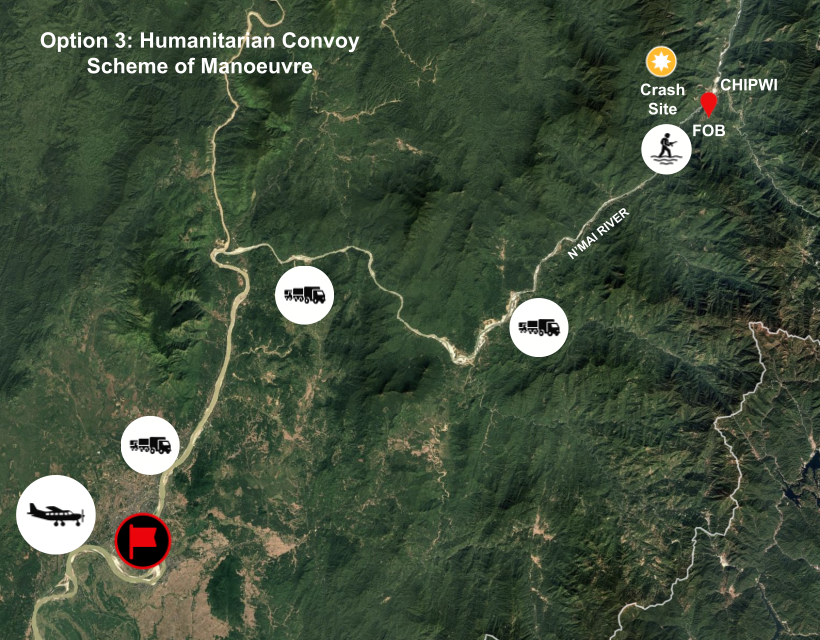
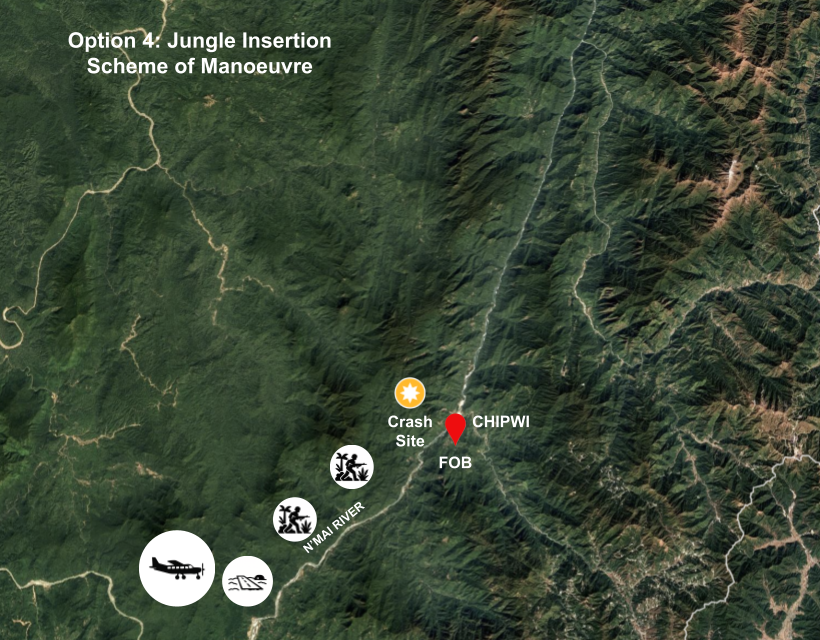
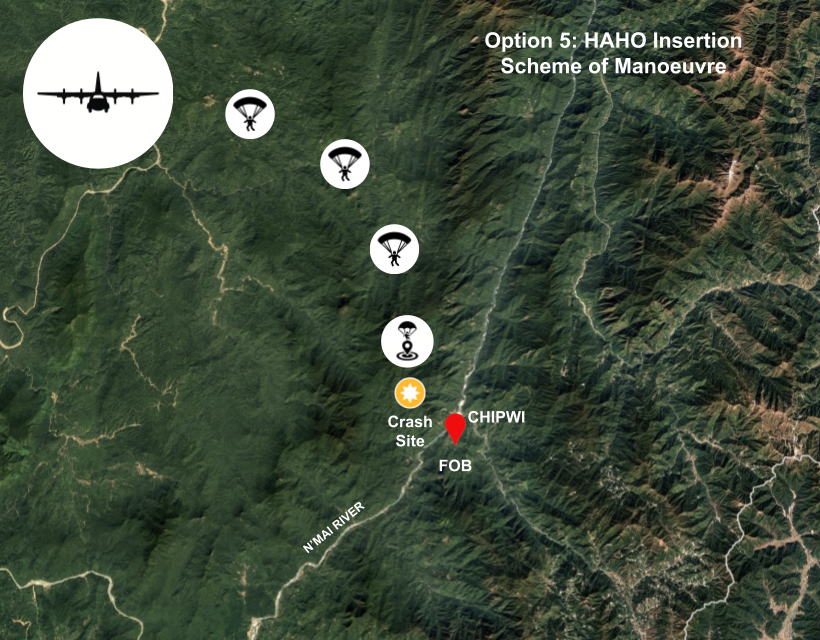
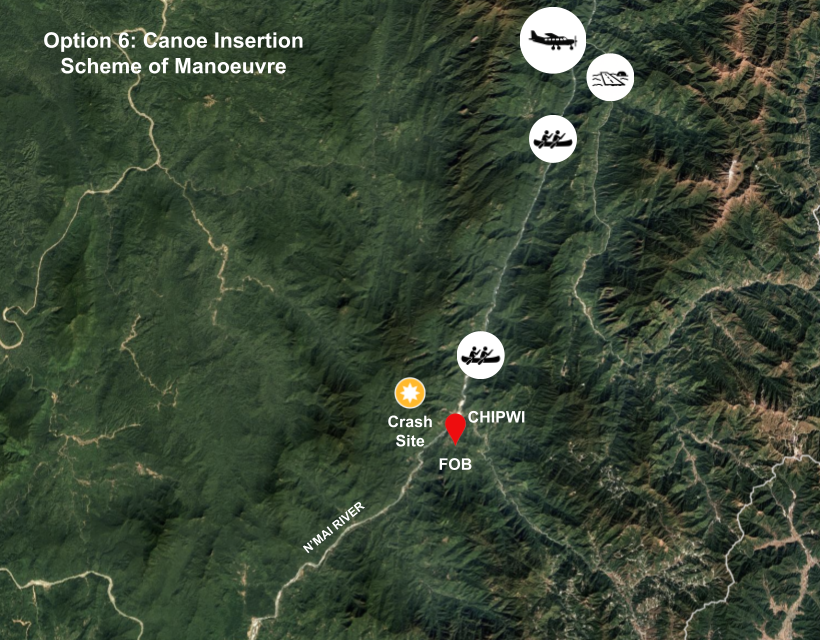
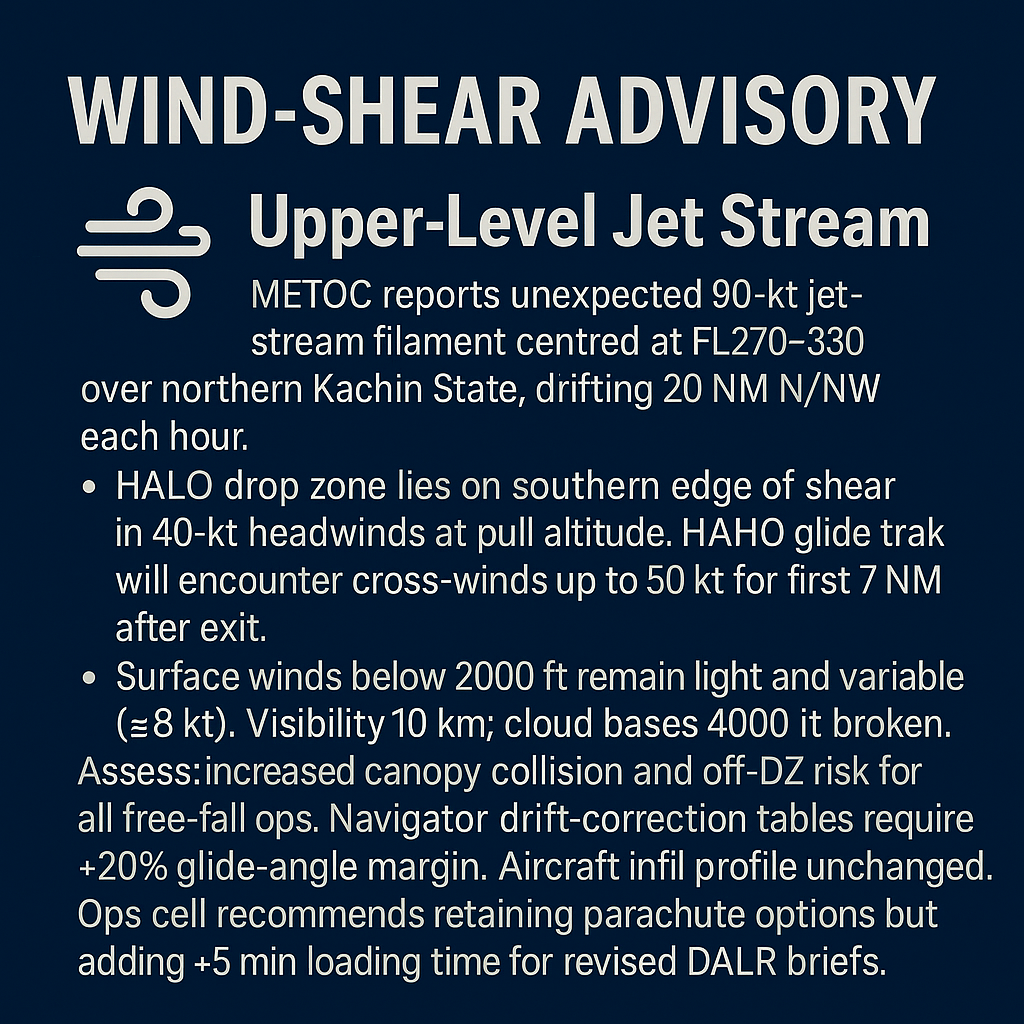
Ops Cell Guidance
- Jumpmaster update PI drift and revise the DALR.
- Aircrew shift TOT by +5 min and confirm with GUARDIAN C2.
- Increase jumper separation to 6 sec (was 4 sec) to reduce canopy-collision risk.
- Final wind check 15 min before ramp-open; abort criteria unchanged.
Key Terms
- PI – Point of Impact
- TOT – Time on Target
- DALR – Detailed Air-borne Landing Risk
- kt – Knots (nautical miles per hour)
- NM – Nautical Mile
- METOC – Meteorology & Oceanography Cell

A hydraulic leak in the MV-22’s starboard rotor has grounded the Osprey. Under harsh hangar lights, technicians swarm the exposed engine bay as diagnostic consoles strobe fault codes. With the clock running out, Option 2 helicopter insertion is officially scrubbed.
Context
After confirming your decision on what additional equipment to bring, you turn your attention to Phase 1 of the mission – the Ingress. You need to conduct a low profile, tactical insertion from the Jorhat Airport (JRH) into Myanmar and onwards to the crash site.
How will you accomplish this task?
From your Special Operations training, you know that you must balance key factors of speed, surprise, simplicity, and security. The Tatmadaw is a formidable military force, and they are operating actively in the region. You can’t risk being detected, engaged, or captured – all of which would result in certain mission failure and would seal the fate of Captain Chan.
The stakes are high – what will you do?
Task
Select the best method to tactically insert your team from JRH to the crash site location.
Options
Explore the options below with your team.
- Option 1
- Option 2
- Option 3
- Option 4
- Option 5
- Option 6
High-Altitude, Low-Opening (HALO) Parachute Insertion
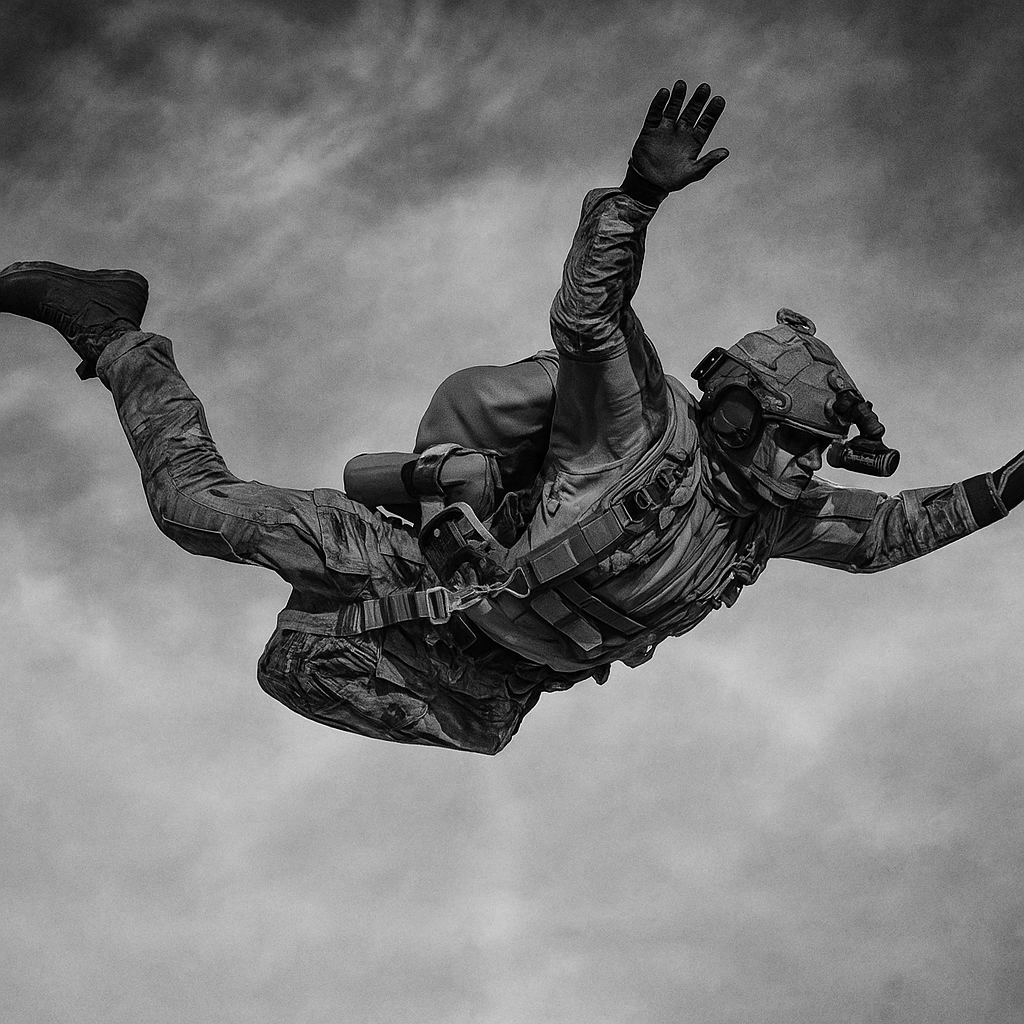
Board a military transport aircraft at JRH for a covert entry into Myanmar. Execute a HALO parachute deployment at 25,000 feet, exiting the aircraft almost directly above the designated Drop Zone (DZ), approximately 3 km east of the crash site. After free falling for 2 minutes at a speed of 180 km/h, deploy your parachutes 2,500 feet above the ground, conducting a controlled glide to the DZ. Upon landing, regroup and advance to the crash site for mission continuation.
Estimated time: 1 hour, 30 minutes
Advantages- Stealthy and rapid entry minimizes detection risk.
- Enables insertion into tightly controlled areas.
- Higher risk due to low-altitude parachute deployment.
- Winds and visibility can significantly impact operation success.
Helicopter Insertion
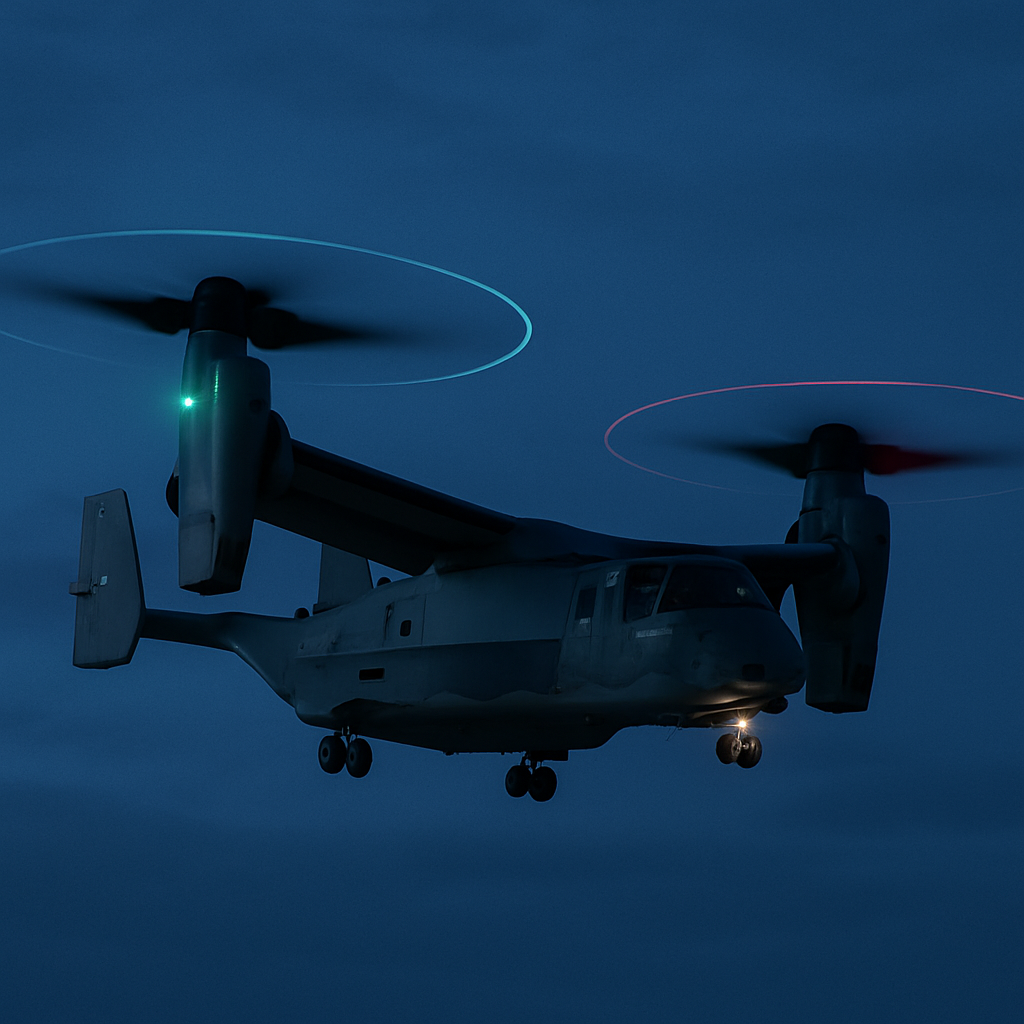
Board a V-22 Osprey, a tiltrotor aircraft capable of vertical take-off and landing (VTOL), at JRH. Execute a swift and direct approach to the crash site by employing Airplane Mode with low-flying, radar-evading insertion techniques. Upon reaching the crash site, transition the V-22 to VTOL mode so your team can deploy to the ground using fast ropes for mission continuation.
Estimated time: 30 minutes
Advantages- Rapid deployment capability enhances mission responsiveness.
- Flexible in selecting landing zones to best suit mission needs.
- Exposure to ground-based anti-aircraft defenses.
- Rotorcraft noise adds higher risk of compromise.
Humanitarian Aid Infiltration
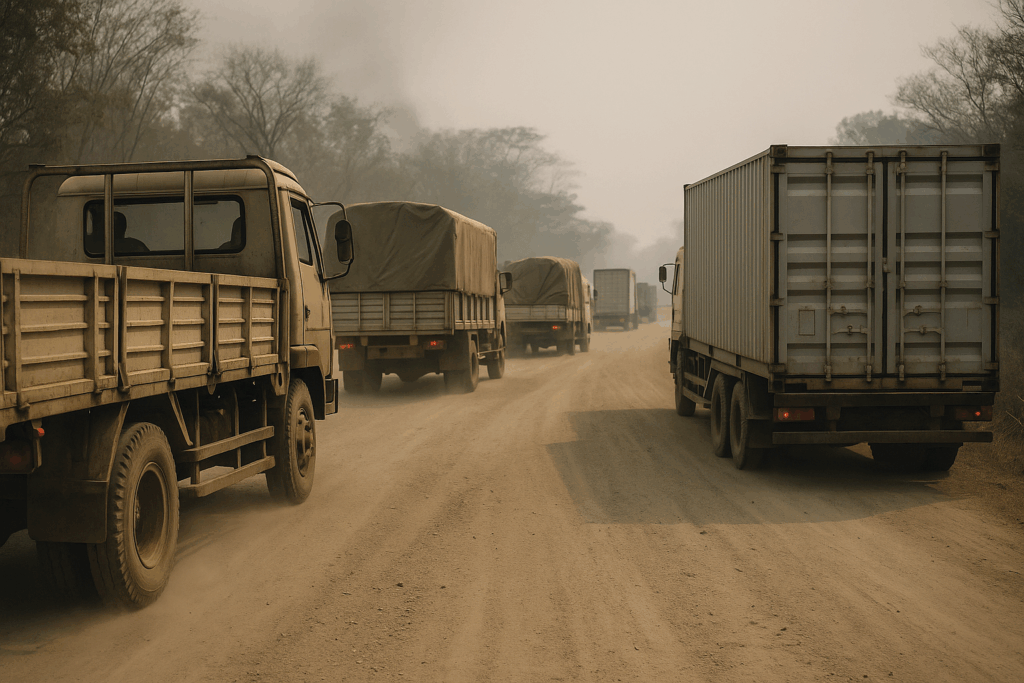
Depart from JRH aboard a Cessna 208 Caravan, a common civilian transport aircraft operating under a UN-sanctioned humanitarian aid mission. Fly to MYITKYINA Airport, the primary hub for aid distribution in Kachin State. Upon landing, integrate your team into a humanitarian convoy en route to CHIPWI. Strategically exit the convoy south of CHIPWI, ford the N’MAI River, and advance to the crash site for mission continuation.
Estimated time: 5 hours, 30 minutes
Advantages- Authentic humanitarian cover story significantly reduces detection risk.
- Minimizes suspicion from local and opposing forces.
- Minimal strategic or tactical flexibility due to reliance on civilian disguise.
- Dependent on the fixed itineraries and predetermined paths of the aid convoy.
Jungle Infiltration
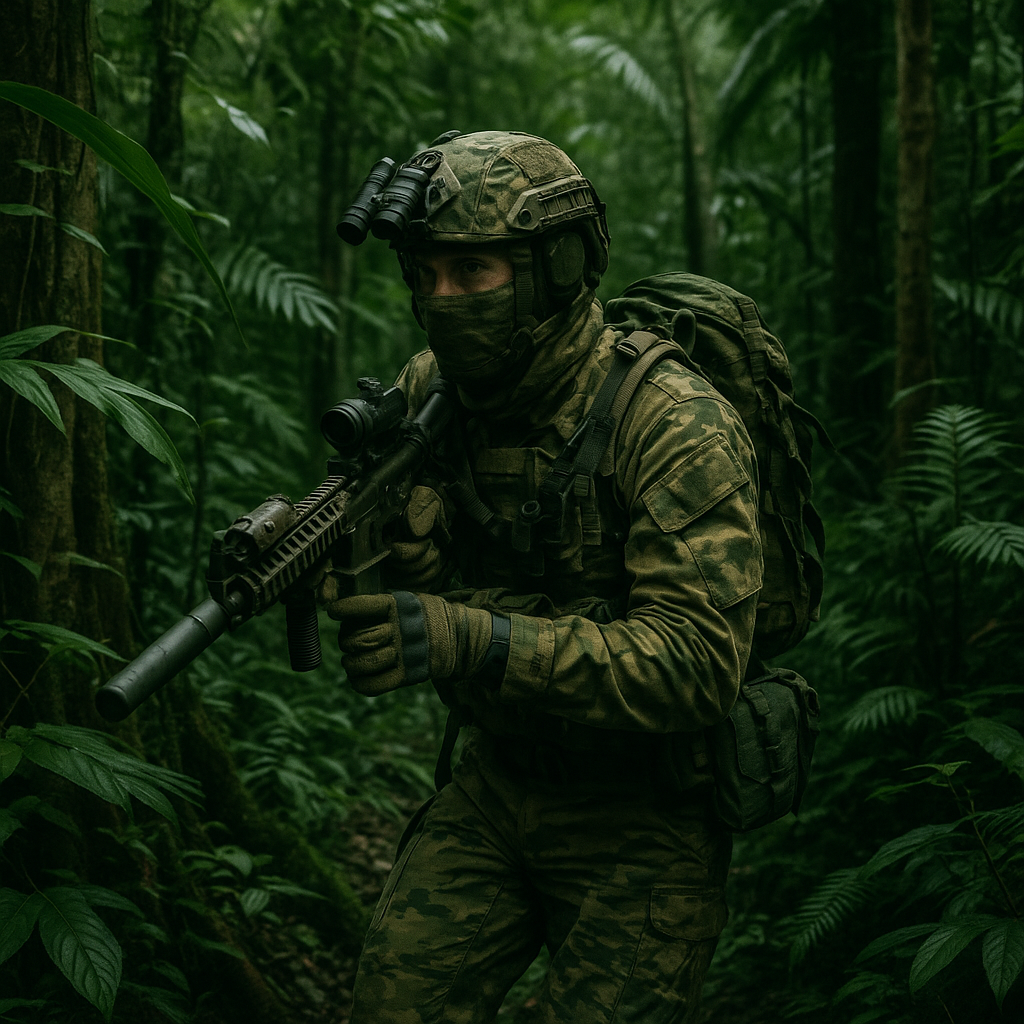
Board a Quest Kodiak aircraft, selected for its short take-off and landing capabilities, to execute a covert infiltration from JRH. Fly to an isolated, austere airstrip located approximately 15 km southwest of the crash site. Upon landing, proceed on foot through dense jungle terrain. Emphasize stealth and use the natural vegetation for cover and concealment while moving silently toward the crash site.
Estimated time: 7 hours, 15 minutes
Advantages- Stealthy insertion minimizes electronic detection.
- Utilizes natural terrain for concealment from enemy surveillance.
- Physically strenuous, requiring high endurance.
- Navigation complexity in the jungle increases risk of delays or errors.
High-Altitude, High-Opening (HAHO) Parachute Insertion
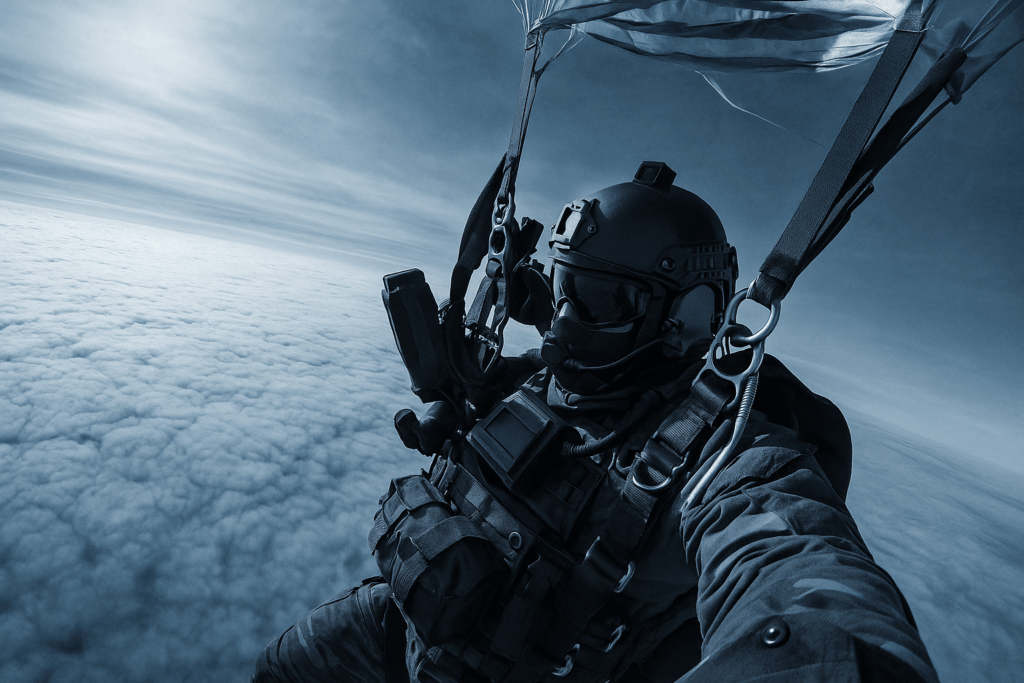
Board a CC-130J Hercules aircraft at JRH for a covert entry into Myanmar. Initiate a high-altitude, high-opening (HAHO) parachute deployment at 30,000 feet, approximately 4 km north of your designated Drop Zone (DZ). After deploying parachutes shortly after exiting the aircraft, navigate a long-distance glide to the DZ located approximately 5 km east of the crash site and west of the N’Mai River. Upon landing, regroup at the DZ and proceed to the crash site for mission continuation.
Estimated time: 2 hours, 15 minutes
Advantages- Extended glide offers broader operational flexibility.
- Early deployment enhances stealth, minimizing radar detection.
- Longer exposure time in the air increases vulnerability.
- Complex navigation skills required for effective glide path management.
Indigenous Canoe Insertion
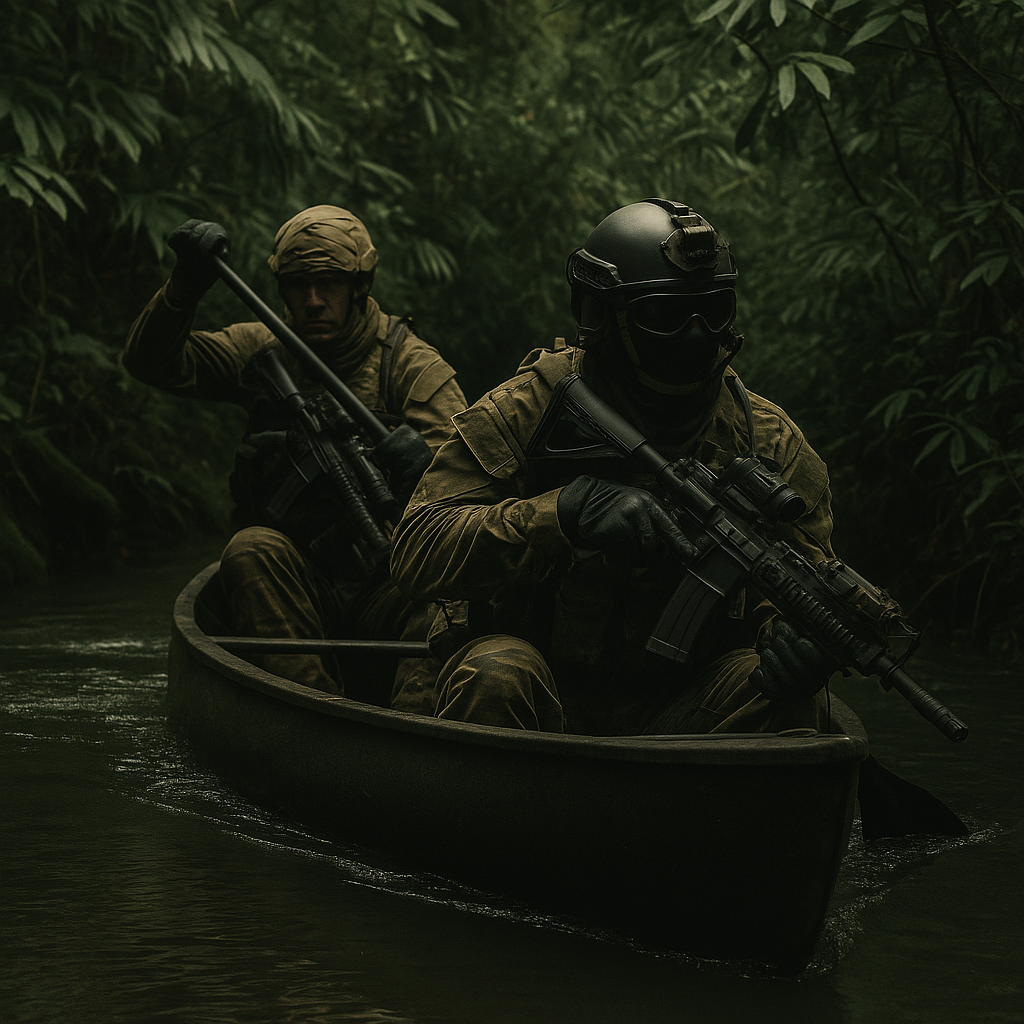
Board a Quest Kodiak aircraft, selected for its short take-off and landing capabilities, to execute a covert entry from JRH. Conduct a discreet flight to a remote, austere airstrip located approximately 50 km north of CHIPWI. After landing, proceed 3 km on foot to the edge of the N’Mai River, where several prepositioned traditional canoes await. Board the canoes and travel downstream, blending in with local river traffic en route to the vicinity of the crash site. Disembark, conceal the canoes, and continue on foot to the objective.
Estimated time: 5 hours, 45 minutes
Advantages- Employs non-technological means for insertion, greatly reducing detectability.
- Provides swift and flexible navigation options on the river.
- Capacity for transporting essential gear and supplies is limited.
- Traveling by river may expose the team to observation from the banks.
Decision
After carefully assessing all of the options above, as a team choose the best method for tactical insertion.Your team must wait until there are 2 mins (or less) remaining before selecting its decision.
Option 1: HALO Parachute Insertion
Option 2: Helicopter Insertion
Option 3: Humanitarian Aid Infiltration
Option 4: Jungle Infiltration
Option 5: HAHO Parachute Insertion
Option 6: Indigenous Canoe Insertion

